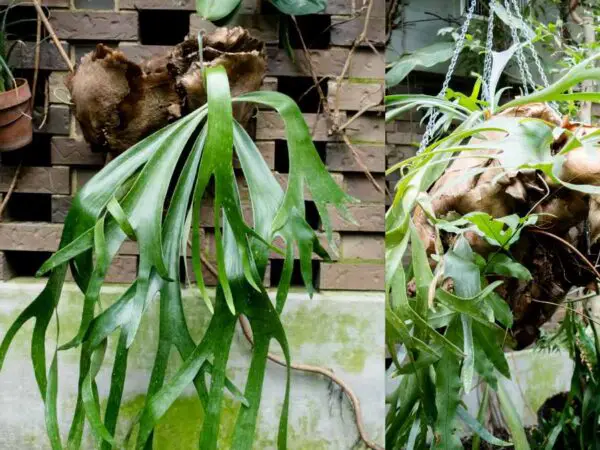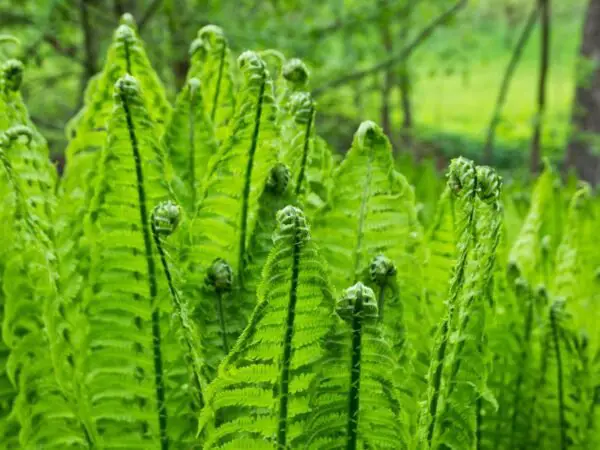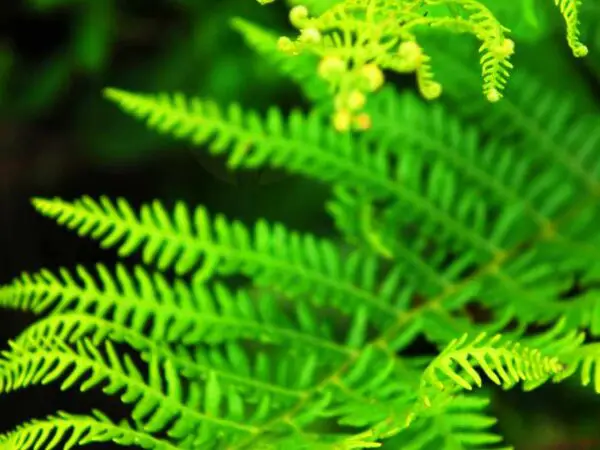Dividing ferns may seem daunting, but with the right guidance, it's a manageable task. In this guide, we'll explore how to divide ferns effectively, ensuring healthy growth and propagation.
To divide ferns, start by selecting a healthy, mature plant with multiple fronds and root ball. Carefully remove the plant from its pot or the ground, being mindful of its roots. Next, gently separate the root ball into sections, ensuring each division has both roots and fronds. Replant the divisions in suitable soil, keeping them moist but not waterlogged. Over time, the divided ferns will establish themselves and flourish in their new environment. Remember to provide adequate light and humidity for optimal growth.
With the proper techniques and care, dividing ferns can be a rewarding experience, allowing you to propagate new plants and enhance your garden's greenery. Explore different fern varieties and experiment with division methods to expand your botanical knowledge and gardening skills. Whether you're a novice or an experienced gardener, there's always more to learn about nurturing and propagating ferns.
Key Takeaways
- Understand Fern Division: Knowing how to divide ferns is crucial for their health and growth.
- Prepare Properly: Before dividing ferns, ensure you have the right tools and a suitable environment.
- Follow Step-by-Step Process: Divide ferns carefully using the correct techniques to avoid damaging the plants.
- Care for Divided Ferns: Provide post-division care to help the ferns establish themselves in their new locations.
- Use Tips for Growth: Implement tips for healthy growth, such as proper watering and light conditions, to support your divided ferns.
- Address Common Issues: Be prepared to troubleshoot common problems that may arise during the fern division process.
Understanding Fern Division
Growth Promotion
Ferns benefit from a balanced fertilizer application to support their healthy growth. Providing adequate space for ferns allows them to spread their roots and thrive. Regularly checking for overcrowding signs helps prevent stunted growth.
Propagation Techniques
Dividing ferns serves as a reliable method for creating new plants rather than using seeds. This technique ensures that the new plants maintain the characteristics of the parent plant, preserving desired traits.
Timing Importance
Spring stands out as the ideal season for dividing ferns, allowing them to establish before the growing season begins. It is crucial to avoid dividing ferns during extreme weather conditions, which may hinder their growth potential.
Preparing to Divide Ferns
Necessary Tools
Cutting Implements
- Use a long serrated knife for precise cuts when dividing ferns.
- Sharp tools help prevent plant damage during division.
- Disinfect the knife to avoid disease transmission.
Potting Supplies
- Select pots with good drainage to prevent overwatering.
- Choose pots that offer enough space for root growth.
- Consider using terracotta pots for improved air circulation.
Materials Needed
Soil Mix
- Prepare a soil mix with organic matter for ferns' health.
- Add grit to enhance soil drainage and prevent waterlogging.
- Avoid compacted soil that may hinder root development.
Containers
- Pick containers slightly larger than the fern's root ball.
- Ensure containers have drainage holes to avoid water stagnation.
- Shallow containers suit ferns with shallow root systems well.
Step-by-Step Division Process
Identifying Division Points
Look for natural separations in the fern clump to identify division points. Divide the fern at points where the roots naturally separate, aiming to create sections with an equal balance of leaves and roots.
- Search for distinct clusters within the fern that can be easily separated.
- Ensure each section has enough foliage to support growth after division.
- Avoid dividing areas with weak or stunted growth for optimal results.
Separating Roots
Gently separate the roots of the fern sections to avoid damage. Carefully tease apart tangled roots to ensure each section has enough roots for growth without pulling or tearing them during separation.
- Use a sharp, clean knife or shears to cut through any tough root masses.
- Check for any signs of damage or rot in the root system before proceeding.
- Trim off any dead or unhealthy roots before transplanting the divided sections.
Transplanting Sections
Move each divided fern section to its new pot or garden space promptly. Ensure the new planting location provides adequate space for the fern to grow while watering the transplanted sections thoroughly to help them establish.
- Prepare the soil in the new planting area by mixing in some organic matter for nutrients.
- Create a small hole in the soil large enough to accommodate the divided section comfortably.
- Firmly press down around the base of each transplanted section to eliminate air pockets.
Caring for Divided Ferns
Watering Needs
- Water the divided fern sections generously after transplanting.
- Maintain consistent watering to support the establishment of the new plants.
- Adjust watering frequency based on the moisture needs of the fern species.
Light Requirements
- Place the divided ferns in locations with indirect sunlight.
- Avoid exposing ferns to direct sunlight, which can scorch their delicate leaves.
- Monitor the light conditions to ensure the ferns receive sufficient but not excessive light.
Fertilization Schedule
- Fertilize divided ferns sparingly to avoid overfeeding.
- Use a balanced liquid fertilizer diluted to half strength.
- Apply fertilizer during the growing season for optimal nutrient uptake.
Tips for Healthy Growth
Soil Considerations
When planting ferns, choose a well-draining soil mix that is rich in organic matter to promote healthy growth. Heavy soils should be avoided as they can cause waterlogging and lead to root rot. It's essential to periodically test the soil pH to ensure it remains within the suitable range for optimal fern growth.
Humidity Control
To mimic the natural environment of ferns, it's crucial to maintain high humidity levels around the divided plants. Grouping ferns together creates a microclimate that helps increase humidity levels effectively. Regularly misting the ferns will help keep their foliage hydrated and thriving.
Troubleshooting Common Issues
Root Rot Prevention
To prevent root rot, ensure the soil mix has proper drainage to avoid water accumulation. Avoid overwatering to prevent excess moisture, which can cause root rot. Regularly monitor soil moisture levels to prevent waterlogging.
Pests and Diseases
Inspect divided ferns frequently for signs of pests such as spider mites or scale insects. Promptly treat any pest infestations using neem oil or insecticidal soap. Monitor ferns for symptoms of fungal diseases and address them promptly.
Propagating Overgrown Ferns
Assessing Plant Health
Regularly check divided ferns for signs of stress like yellowing leaves, stunted growth, or wilting. Address any health issues promptly to prevent further damage and ensure optimal growth.
Effective Techniques
Handle fern divisions gently to minimize stress and ensure a balance of roots and leaves. Monitor progress closely to evaluate the success of the division process.
Expert Insights on Fern Care
Seasonal Adjustments
Adjust watering frequency and light exposure based on seasonal changes. Provide extra protection to divided ferns during extreme weather conditions. Monitor the ferns closely during seasonal transitions to ensure their health and growth.
List:
- Adjust watering frequency
- Provide extra protection during extreme weather
- Monitor closely for health and growth
Long-term Maintenance
Plan for regular repotting or division of ferns every 3 to 5 years. Monitor the growth of the ferns to determine when they need division. Maintain a consistent care routine to ensure the long-term health and vitality of the ferns.
List:
- Regular repotting or division every 3 to 5 years
- Monitor growth for division timing
- Maintain consistent care routine for long-term health
Summary
You've learned the ins and outs of dividing ferns, from understanding the process to caring for your newly separated plants. Following expert advice and tips for healthy growth will ensure your ferns thrive. Troubleshooting common issues and propagating overgrown ferns are also part of your fern care arsenal. Remember, expert insights can guide you through any challenges you may face. Now armed with this knowledge, go ahead and give your ferns the attention they deserve to flourish in your indoor oasis.
Frequently Asked Questions
How do I know when it's time to divide my ferns?
Ferns usually need dividing every 2-3 years or when they outgrow their pots. Signs include crowded roots, reduced growth, or the plant becoming root-bound.
Can I divide my ferns at any time of the year?
The best time to divide ferns is in spring when new growth begins. This allows the plants to recover quickly and establish themselves before the dormant season.
What tools do I need to divide ferns successfully?
You will need a sharp knife or garden shears for cutting through roots, clean pots with drainage holes, high-quality potting mix suitable for ferns, and gloves to protect your hands from debris.
How should I care for divided ferns after the division process?
After dividing your ferns, place them in a location with indirect light, keep the soil consistently moist but not waterlogged, maintain humidity by misting regularly, and avoid fertilizing for a few weeks to prevent stress on the newly divided plants.
What are some common issues that may arise after dividing ferns?
Common issues post-division include wilting due to shock, root rot from overwatering, or inadequate drainage causing waterlogged soil. Monitor your plants closely for signs of distress and adjust care accordingly.
Image Source: Paid image from CANVA





